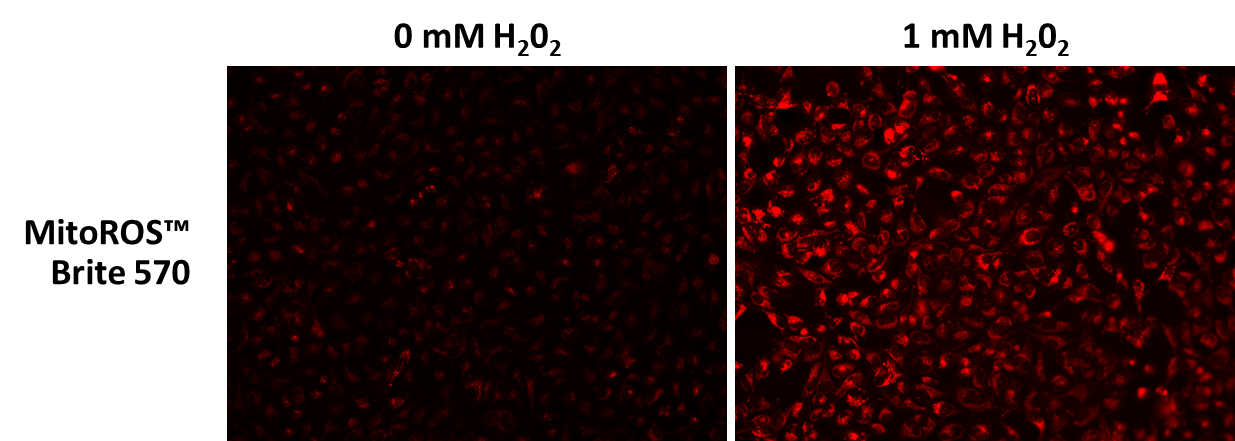Mitochondrial ROS (mtROS or mROS) are reactive oxygen species (ROS) produced in mitochondria. Selective detection of mtROS is a critical task to investigate the cellular functions of mitochondria. The cell-permeant MitoROS Brite™ 570 reagent is cell-permeable and selectively located in mitochondria. It is nonfluorescent and produces bright orange fluorescence upon ROS oxidation in mitochondria. The resulting fluorescence can be measured using fluorescence imaging, high-content imaging, microplate fluorometry, or flow cytometry. mtROS was considered to be the by-products of cellular metabolism. However, they are now recognized as important signaling molecules. mtROS is primarily formed during oxidative phosphorylation at the electron transport chain (ETC) on the inner mitochondrial membrane. Electrons leak from complexes I and III, partially reducing oxygen to form superoxide. Superoxide is rapidly converted to hydrogen peroxide by two dismutases: SOD2 in the mitochondrial matrix and SOD1 in intermembrane space. At low levels, mtROS are essential for metabolic adaptation (e.g., in hypoxia). They regulate inflammatory responses triggered by danger signals. High mtROS levels activate apoptosis and autophagy pathways, potentially inducing cell death. Mitochondrial dysfunction leads to increased ROS levels, contributing to aging. mtROS induces cellular senescence, a stress response. Recently it has been reported that monocytes/macrophages in the lungs produce mtROS in COVID-19 patients, affecting disease pathogenicity, thus targeting mtROS could be a therapeutic strategy for novel drugs against coronavirus.


| Catalog | Size | Price | Quantity |
|---|---|---|---|
| 15998 | 1 mg | Price |
| Molecular weight | 732.81 |
| Solvent | DMSO |
| Excitation (nm) | 555 |
| Emission (nm) | 568 |
| H-phrase | H303, H313, H333 |
| Hazard symbol | XN |
| Intended use | Research Use Only (RUO) |
| R-phrase | R20, R21, R22 |
| Storage | Freeze (< -15 °C); Minimize light exposure |
| Fluorescence microscope | |
| Excitation | Cy3 Filter Set |
| Emission | Cy3 Filter Set |
| Recommended plate | Black wall/clear bottom |
| Telephone | |
| Fax | |
| sales@aatbio.com | |
| International | See distributors |
| Bulk request | Inquire |
| Custom size | Inquire |
| Technical Support | Contact us |
| Request quotation | Request |
| Purchase order | Send to sales@aatbio.com |
| Shipping | Standard overnight for United States, inquire for international |

